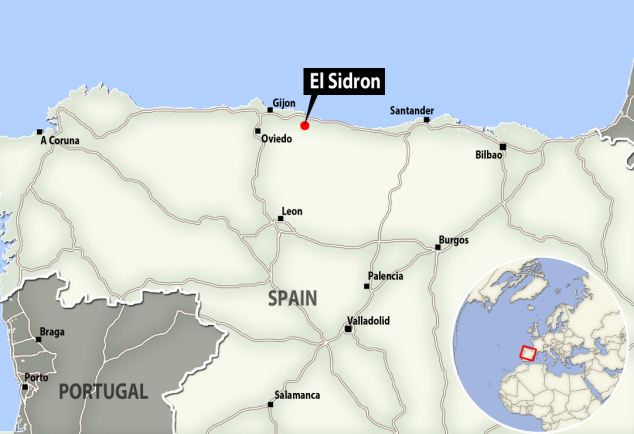
The science journal Nature published a study co-authored by Lalueza-Fox that suggests the extinct human species the Neanderthal had developed its own medicine cabinet to cope with pain and disease.
This is what emerges from an analysis of calcified dental plaque from two individuals who once lived in the northern Spanish cave of El Sidrón in Asturias.
“Evidence for self-medication was detected in an El Sidrón Neanderthal with a dental abscess and a chronic gastrointestinal pathogen,” reads the study abstract.
Ancient DNA from this individual’s dental plaque suggests that he chewed poplar bark, which is a natural source of salicylic acid, the analgesic ingredient in aspirin. “This bark has no nutritional value, so why would he chew it if not to relieve the pain?” wondered Lalueza-Fox who works at the Evolutionary Biology Institute in Barcelona, at a presentation of the study.
The Neanderthal also consumed Penicillium, a fungus with antibiotic properties. These results back the findings of an earlier 2012 study, which concluded that the Neanderthals of El Sidrón used plants like chamomile, which helps with digestion, and Achillea, which has anti-inflammatory properties.

The British prehistorian Karen Hardy, of Barcelona’s Autonomous University, signed both papers. “All of the world’s animals self-medicate. Dogs, for instance, eat grass to induce vomiting. To me, the surprising thing would be for Neanderthals not to self-medicate,” she said.
Recent research has dispelled the cartoonish notion of Neanderthals as subhuman creatures. Members of the species adorned themselves with showy feathers, possessed praiseworthy technology, used fire to cook, buried their dead and had sex with modern humans over 100,000 years ago.
According to hardy The Neanderthals were intelligent, and they possessed an ecological knowledge that we have lost. María Martinón Torres, a paleoanthropologist at London University College, notes how the study shows that Belgian Neanderthals had a meat-based diet, while the Spanish ones were more vegetarian. A diversity that portrays the Neanderthals as a flexible species, able to exploit different resources depending on circumstance and availability.
This researcher is aware however that a British anthropologist named Chris Stringer came up with an alternative theory in 2013: that these non-food plants were found in Neanderthal dental records due to their own consumption of herbivore stomach contents. But Martinón Torres notes that the indications of salicylic acid and natural antibiotic consumption only show up in a Neanderthal with a painful dental abscess, which as far as she is concerned, seems like more than just a happy coincidence.

The cave of El Sidrón, in the northern Spanish region of Asturias, was discovered in 1994 and excavation has been going on since 2000. Since then, it has produced a treasure trove of 2,500 bone remains from at least 13 Neanderthal individuals, both male and female. Around 49,000 years ago, in what appears to be an act of survival cannibalism.
Professor Lalueza-Fox told a meeting of the Royal Society in London that they appeared to have been killed and eaten, with their bones and skulls split open to extract the marrow, tongue and brains. The victims included three female and three male adults, three boys aged 12-15 and three children aged from two to nine years. All had been butchered. It must have been a big feast. We think Neanderthal groups were about 10-12 strong so this may have been a complete family group, although someone may have got away.
Neanderthals lived in Europe from about 240,000 to 30,000 years ago so their remains at most sites range over many millennia. Unusually, the El Sidron find captured a single deadly event one day around 49,000 BC – thousands of years before the first modern humans arrived in Europe. The remains were all buried in a room-sized gallery 250 yards from the entrance but were likely washed into the chamber from above.
Professor Lalueza-Fox said: “We think the victims were killed in a rock shelter above where their bones were found. They were killed and their bones stripped of meat and dumped. Then shortly after they were killed, a powerful storm came along and washed the bones, stone tools and sediments down a chimney and into the little gallery where we found them. Those sediments sealed the chimney and the gallery, so the bones sat there for 51,000 years till they were found again.”
The bones were remarkably well-preserved and their DNA virtually uncontaminated, allowing Professor Lalueza-Fox and his team to sequence Neanderthal genes governing features like hair colour, blood group and taste perception.
The El Sidron find is not the first evidence of cannibalism among Neanderthals, which may be one of the reasons why they were ultimately less successful than modern humans. Professor Lalueza-Fox explained: “Neanderthals had small social networks, which made them less able to co-operate with others in times of trouble. Perhaps that made them prone to eating each other when times got hard.”